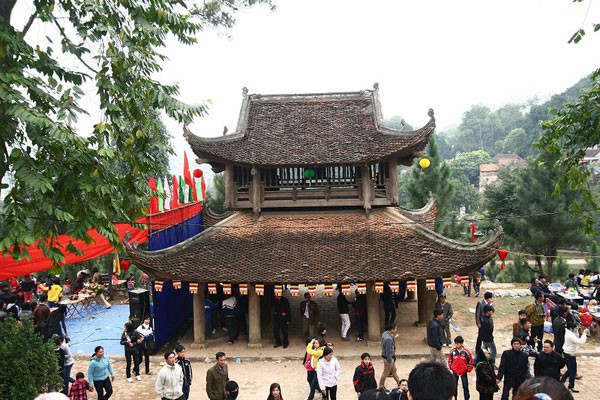
From Hanoi’s centre, my motorbike goes through the piercing cold of the early days of spring to Tien Phuong Commune, in the city’s Chuong My rural district, where people from all walks of life are flowing to a century-old pagoda, for a pilgrimage and attending its festival.
The road leading to the So Mountain, where the pagoda is perched, is packed with people.
Tram Gian Pagoda is one of Vietnam’s most ancient pagodas. It is also called Tien Lu and Quang Nghiem and has 100 compartments and over 150 precious statutes. Seen from beneath, the pagoda is like a nice flower opening in the sky and receiving quintessence from the earth and sky.
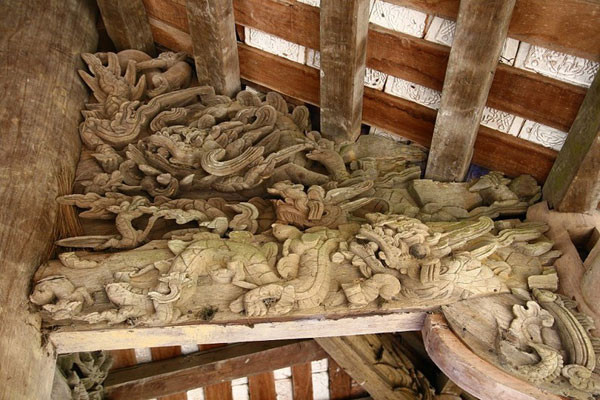
The pagoda was built in 1185, under the reign of King Ly Cao Tong (1173 – 1210). Under the Tran Dynasty (1225-1400), a monk named Binh An (Peace) from the neighbouring district Thanh Oai’s Boi Khe Village, came to the pagoda to upgrade it and stayed there. An was said to be extremely intelligent and have much magic. The shaman was respected by the court, as he greatly helped fight against foreign invaders. Legend has it that An could stretch himself into a giant and each of his footsteps could make a pond or a lake.
An passed away at the age of 95 and was elevated to the status of a saint, who was called Saint Boi or Bodhisattva Binh Dang Hanh Nghia (Bodhisattva of Righteousness and magnanimity) or Bodhisattva Khai Son.
After his death, An’s soul frequently appeared and helped locals. When the Chinese Ming troops invaded the country, they brutally killed people for robbery and burned pagodas, temples and houses. An’s soul made a blood rain to scare the invaders away.
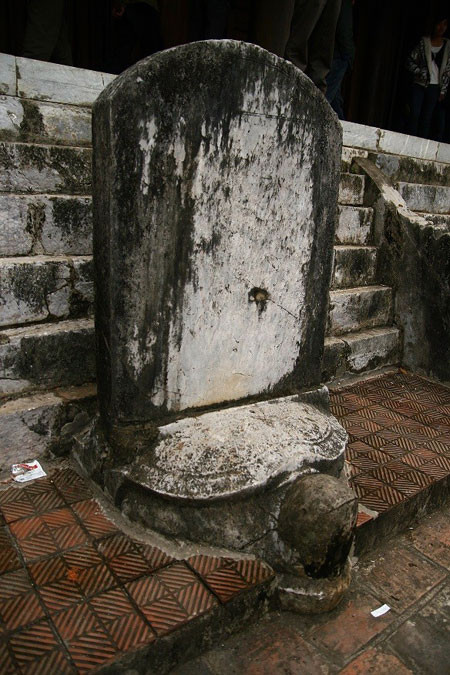
A magical festival
Tram Gian Pagoda’s festival is a regional one because it is jointly organised by many villages in the district and Boi Khe Village, where Binh An was born. It is organised every year, but such a big festival takes place every four years.
The festival officially lasts from the fourth day to the sixth of the first lunar month. However, locals say the festival takes place until the 10th day of the month. Official attendants may be several hundreds of people, while spectators may be tens of thousands of people.
After a big performance of local dances and drumbeats and gongs, some 20 old men covered with vermillion silk coats kneel before the altars inside the main room of the pagoda. They respectfully kowtow while praying for prosperity and peace for the people. Then 20 young men, who are all single and have an unblemished life, are allowed to come inside to carry a vermilion-painted and gilded palanquin, outside to the pagoda’s yard.
All of the men are dressed in vermilion silk coats, with their chests pinned with wreaths made of shaddock bloom, their waists covered with twinkling green silk belts, their trousers white and traditionally-styled yellow shoes.
After a big cry made by an old MC, the palanquin procession begins. Now the most exciting and sacred atmosphere peaks through the reverberating sounds of drums and gongs, as well as the shouts and prayers of viewers.
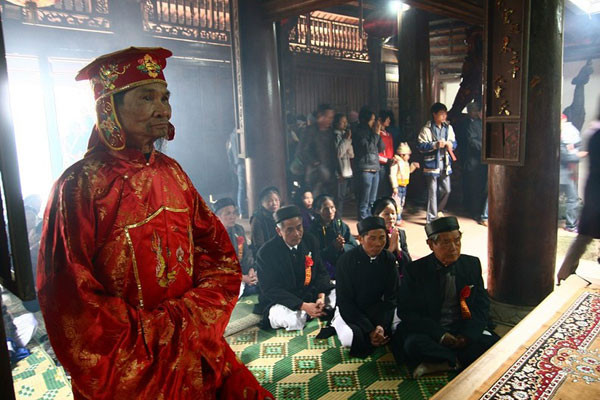
The palanquin is accompanied by traditional orchestras and many traditionally dressed people with many giant religious tools such as parasols, fans, assorted pennons and weapons, which reproduce those used by An to quench the invaders in the bygone days.
It is also escorted by two pairs of white and pink bamboo horses and a pair of bamboo elephants, which are all carried by wheels and protected by parasols and traditionally dressed warriors.
The most visible thing able to be seen from afar is the big red silk flag embroidered with the Chinese script of “Lenh”. The flag is that of the saint. It is sometimes waved aloft to remind us of the saint’s orders to fight the enemies in the past.
After hours of difficulty making its way through the stream of people to the foot of the mountain, the procession slowly goes around the village and then returns to the pagoda.
Now is the time for locals to enter the pagoda to burn incense, pray and join the festival’s games.
Checkmate
The festival is the rendezvous of all types of traditional games and competitions, such as puppet dances, wrestling, making of feasts and oan (Truncated-cone-shaped cake made of roast glutinous rice flour). However, the most interesting game is Danh Co or playing chess.
The game is organised on a large ground, down in front of the pagoda. Many years ago, the game was Co Nguoi, meaning that humans are used as chess pieces.
It is based on Co Tuong, which originates from China, where it is called elephant chess. In ordinary Co Tuong, the chess pieces are made of wood, plastic or ivory, or even round pieces of cardboard. But in Co Nguoi, the pieces consist of 16 handsome men dressed in red and 16 pretty women dressed in white or yellow. All of them are required to have good manners.
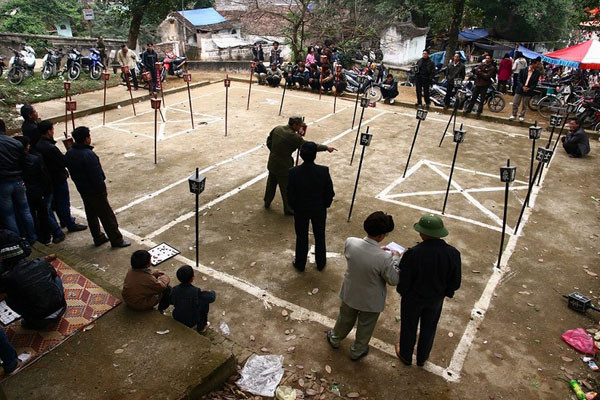
However, at this festival, the human pieces are replaced by big wooden ones with boxes carving the names of the pieces fixed on big wooden poles. But the changed appearance of the chess pieces does not make big changes. The chess ground is thronged by so many people.
Anyone can join the big game, which demonstrates players’ intelligence. But first, they are required to be selected through the games on small chessboards, on the sideline of the ground.
The chess games are supported by drumbeats and viewers’ applause.
Locals say that in the past, the games became more sacred because they were organized in front of the saint’s statute. This was the typical trait of this festival’s chess games, showing the close relationship between genies and humans.
Like the mini chessboard, the ground chessboard includes two active perfect “nations” sharing a “river” that lies between them. Each nation includes all social strata and a king, mandarins, an army and soldiers, which are arranged into three harmonious layers full of oriental culture.
64-year-old Pham Van Nam, who has 40 years of experience in playing chess, says players are required to be careful and patient. “You cannot play for form’s sake and hurriedly,” Nam says, adding that the game I have been witnessing has been lasting nearly two hours.
“If you want to be successful, you have to first be careful. You can teach your children to play chess, as one of the most effective educational methods,” he says.
Another player Bui Thanh Mien, 72 years old, adds that chess is also the character of the Orient’s people, who never want to solve all problems through violence, but through wisdom to win victories.
"The chessboard represents our ways of life,” Mien says. “If you carefully observe players’ gestures, moves and their ways of holding the pieces, you can find out what they are. Whoever is narrow-minded, his moves aim at only immediate benefits. Whoever is cunning, his moves are full of tricks. Whoever is insightful and good-tempered, his moves are offensive and defensive effectively,” Mien says.
Source: NDO